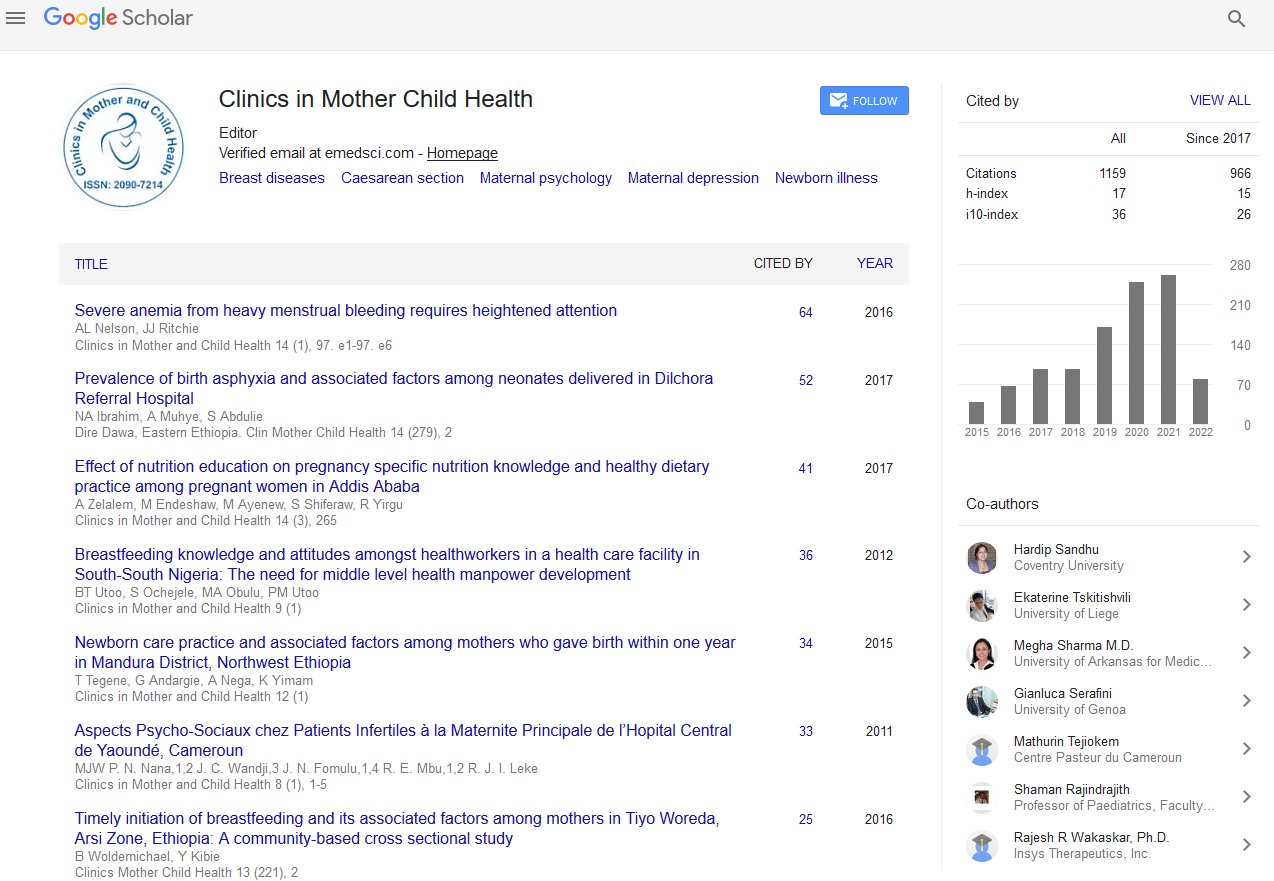Indexed In
- Genamics JournalSeek
- RefSeek
- Hamdard University
- EBSCO A-Z
- Publons
- Geneva Foundation for Medical Education and Research
- Euro Pub
- Google Scholar
Useful Links
Share This Page
Journal Flyer

Open Access Journals
- Agri and Aquaculture
- Biochemistry
- Bioinformatics & Systems Biology
- Business & Management
- Chemistry
- Clinical Sciences
- Engineering
- Food & Nutrition
- General Science
- Genetics & Molecular Biology
- Immunology & Microbiology
- Medical Sciences
- Neuroscience & Psychology
- Nursing & Health Care
- Pharmaceutical Sciences
Abstract
Obstetric Near Miss in Northwest Ethiopia, Has a Pregnant Woman Still 'One Foot in the Grave'?
Selamawit Lake Fenta*, Azezu Asres Nigussie, Simachew Animen Bante, Eyaya Misgan Asres and Martha Hoffman Goedert
Background: Globally obstetric near misses occur in larger numbers than maternal deaths. In the developing countries the unacceptably high maternal mortality overshadows severe maternal morbidity. In Ethiopia a woman is said “ gulbete dekama ” when she get pregnant to mean she is incapacitated and congratulated when she has successfully given birth as “enkuan fetari aterefesh” to mean ‘well survived’. Severe obstetric morbidity continues to be a neglected dimension of maternal health, unlike maternal death. This study aimed at assessing proportion and factors associated with obstetric near miss in Northwest Ethiopia.
Methods: An institution based cross sectional study was conducted from March to April 2017. Data was collected using a pre-tested questionnaire with systematic random sampling technique among 501 participants and analyzed through SPSS. Both bivariable and multivariable logistic regressions were computed. A P-value less than 0.05 were considered statistically significant at 95% confidence level.
Results: Overall, 116 (23.2%; 95%CI:19.1-26.64) of the mothers were having obstetric near misses. The mean age was 26.12 ± 5.6, and the median distance a woman travelled to reach at this facility was 40 kilometers. Age of woman[AOR=3.6; 95%CI:1.29-9.93], marital status[AOR=4.3; 95%CI:1.61-9.12], gravidity[AOR=3.9; 95%CI: 1.74-8.84] and [AOR=2.5; 95%CI:1.14-5.23], antenatal care[AOR=0.1; 95%CI:0.03-0.61], birth weight[AOR=2.2; 95%CI:1.01-4.95], length of hospital stay[AOR=7.3; 95%CI:3.76-13.01] and mode of delivery[AOR=3.5; 95%CI: 1.72-7.22] and [AOR=3.5; 95%CI:1.21-11.13], were significantly associated with obstetric near miss.
Conclusions: The proportion of obstetric near misses was found to be high. Hemorrhagic disorders were the most common event of near miss. Risk of near miss was increased in mothers with extreme age, non-married, not having antenatal care, birth by cesarean section and longer hospital stay.
Published Date: 2020-07-27; Received Date: 2020-06-25


